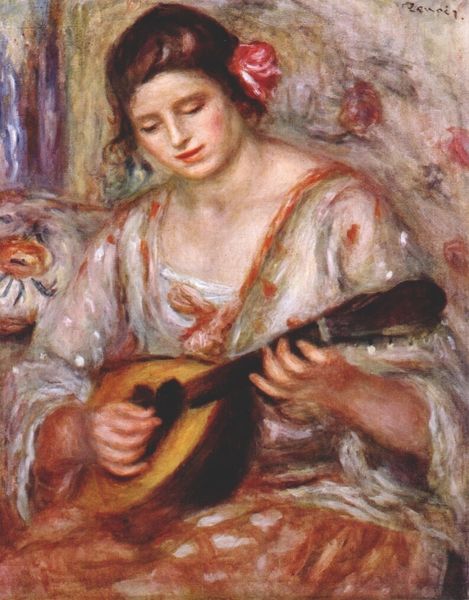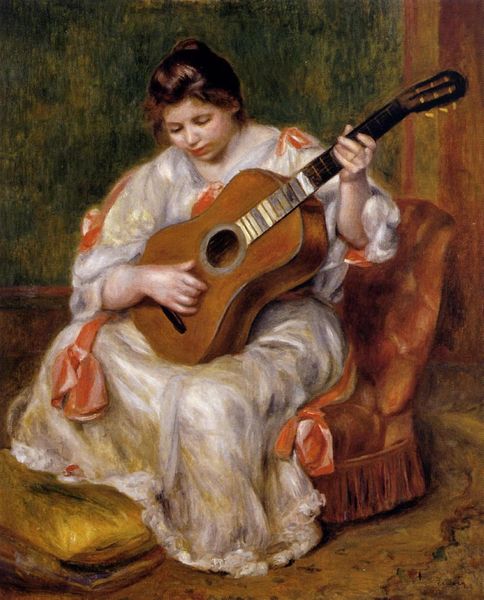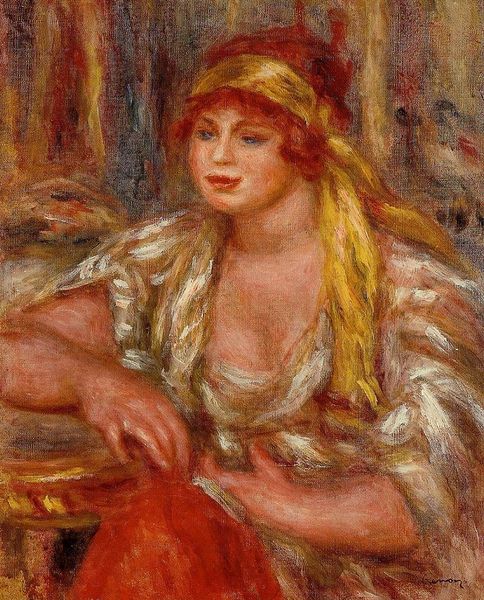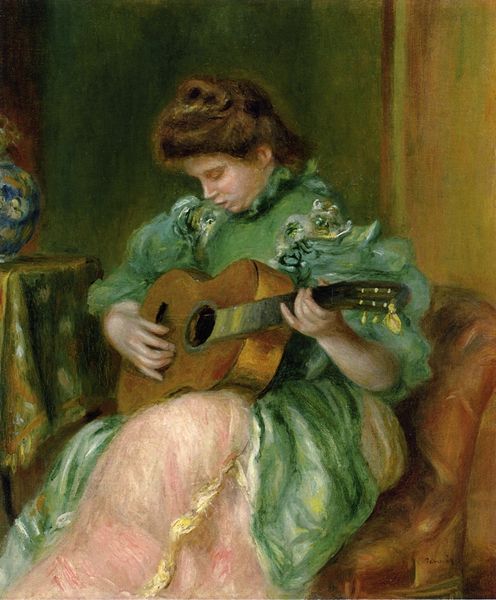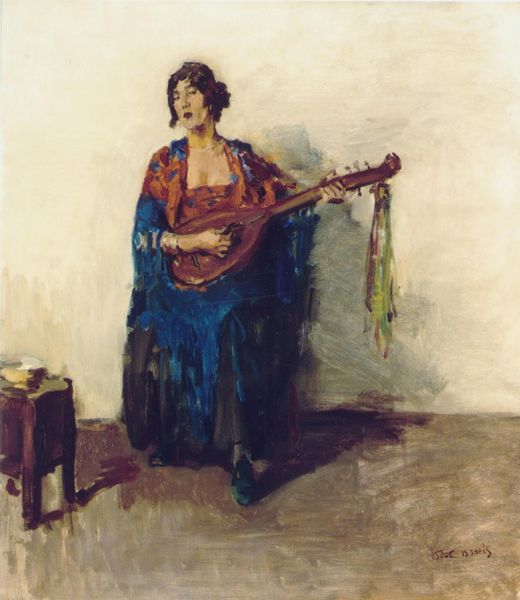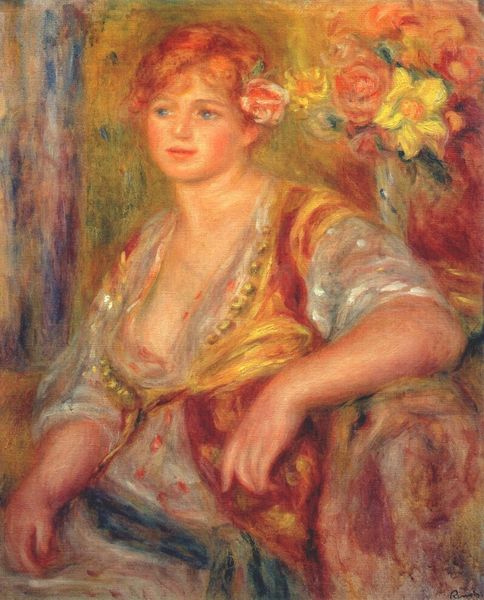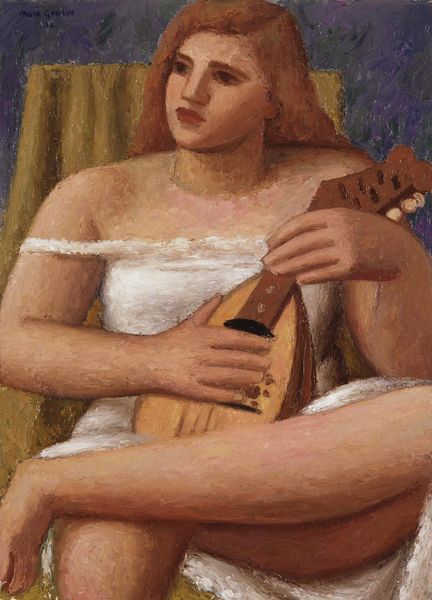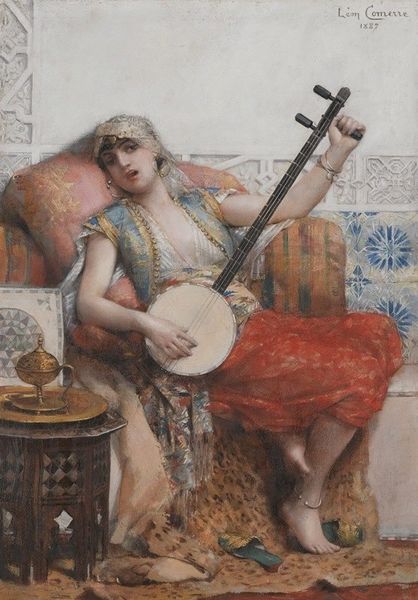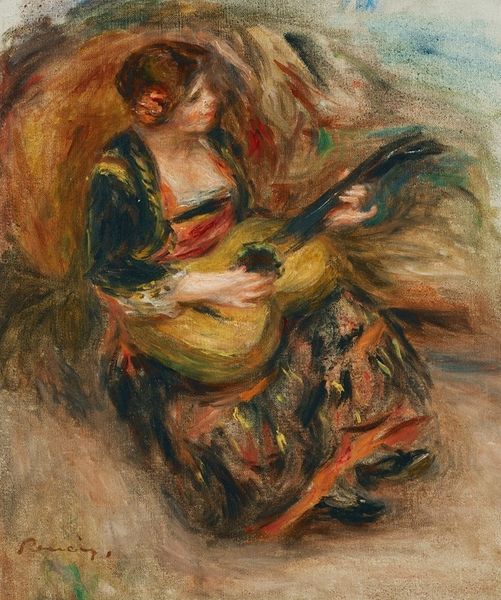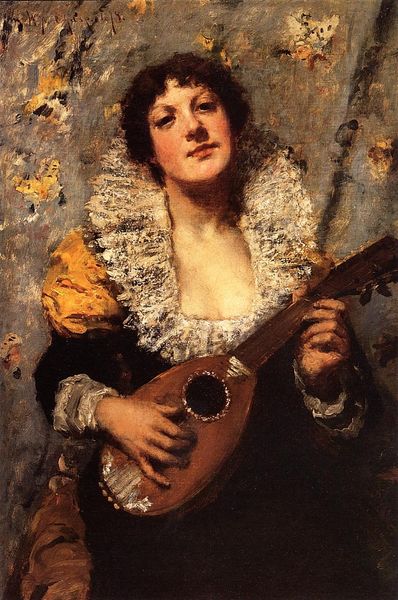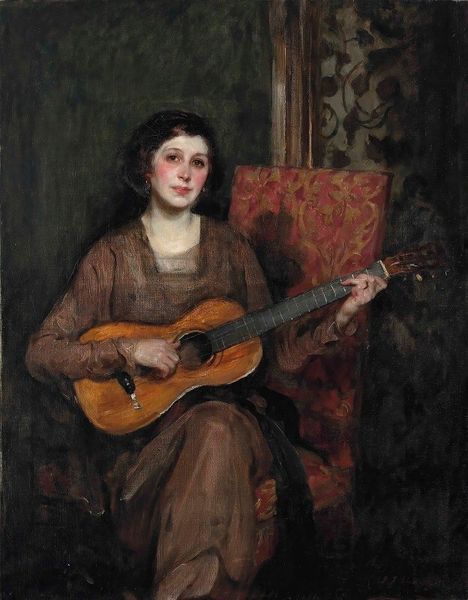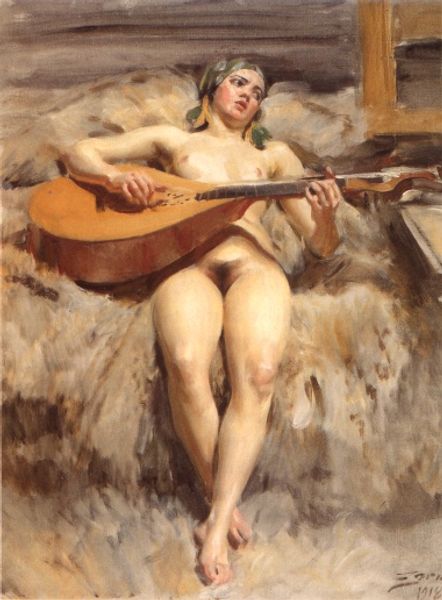
Copyright: Public domain
Editor: Here we have Renoir’s “Woman with a Mandolin,” painted in 1919. It's an oil painting, and the woman’s reverie just strikes me. There's something so gentle about her concentration. What do you see in this piece, beyond just the visual? Curator: Ah, yes, the echoes... Imagine Renoir in his twilight, a man who adored beauty, now capturing a fleeting moment with the warmth only memory can truly imbue. It’s less about technical perfection, and more about a feeling, a whisper of a song carried on the breeze, isn't it? The red-gold palette suggests a memory bathed in sunlight. Does it conjure up a certain atmosphere for you? Editor: Absolutely! That red-gold really pulls me in. I'm wondering though, how does this intimate scene fit within his larger body of work? It seems a little less…social than some of his earlier pieces. Curator: That's a brilliant observation. Later Renoir is fascinating. Think of him reflecting on life, perhaps feeling a deeper connection to simpler, more personal moments. The mandolin becomes symbolic, wouldn't you say, of intimate pleasures, of the gentle joys found in solitude, a melody hummed just for oneself? And those blurred edges, that looseness… they suggest something felt, rather than simply seen. What feeling would you associate with the blurry edges? Editor: I guess I hadn’t thought of the instrument as a symbol that way, but now it’s like… quieter joy, compared to a scene with a bustling dance floor. I see what you mean about feeling over precision, too. So, it’s kind of a reflection of a simpler life? Curator: Precisely. It's as if he's sharing a secret, inviting us to find beauty in the everyday. It’s about savoring the quiet music within. Editor: Wow. I came expecting a portrait and I’m leaving with a whole symphony of ideas.
Comments
No comments
Be the first to comment and join the conversation on the ultimate creative platform.
